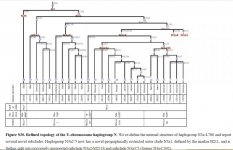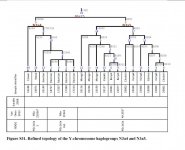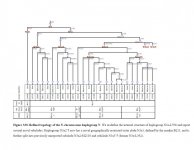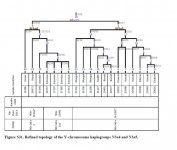Not sure about Mordovia but Western Finland and Estonia were parts of the Indo-European speaking Corded Ware culture. And the dispersal of Finno-Ugric languages towards the Baltic Sea took place after that of Indo-European languages - exactly as it was later the case in Hungary, where an Ugric language also replaced IE. So linguistic ancestors of both Estonians, Finns and Hungarians assimilated Indo-European substrates.
Studies such as Tömöry 2007, Csányi 2008 and Szécsényi-Nagy 2015 seem to indicate that there is surprisingly little genetic continuity between original Hungarians and modern Hungarians, though maybe this is due to unrepresentative conquest era or modern samples:
Tömöry 2007 (apparently lack of mtDNA continuity: "
high-status individuals, presumably conquering Hungarians, show a more heterogeneous haplogroup distribution, with mtDNA haplogroups - N1a, X - which are present at very low frequencies in modern worldwide populations and are absent in recent Hungarian-speaking populations. Our findings demonstrate that significant genetic differences exist between 27 ancient Magyars and 177 modern Hungarian-speakers, and no genetic continuity is seen"):
http://www.ncbi.nlm.nih.gov/pubmed/17632797
http://doktori.bibl.u-szeged.hu/1088/3/Tömöry_tézisek-angol.pdf
Csányi 2008 (Y-DNA) - it indicates that among Magyars haplogroup N1c was common, but it is almost absent from modern Hungary
(two 10th century elite status Hungarians had Y hg N1c and mtDNA Tat C, but in a modern sample of 197 Hungarian-speakers just 1 had Tat C):
http://onlinelibrary.wiley.com/doi/10.1111/j.1469-1809.2008.00440.x/abstract
http://www.ancestraljourneys.org/medievaldna.shtml
2015 study (mtDNA:
see Table 8. on page 137 - it shows total lack of continuity of informative mtDNA haplotypes between a sample of 25 conquest era original Hungarians and a sample of 284 modern Hungarians; even continuity with Cumanians is greater):
http://ubm.opus.hbz-nrw.de/volltexte/2015/4075/pdf/doc.pdf
Also such a study on Cumanians:
http://www.ncbi.nlm.nih.gov/pubmed/16596944
================================================== ===
Possible explanations is that Magyars (original Hungarian-speakers) imposed their language on much more numerous locals. It is also possible that the original Magyar stock eventually got extinct, maybe due to being overrepresented compared to local subject stock among warriors and thus suffering high casualties in wars such as against the HRE, against Mongols, or against Turks. For example, after the battle of Lechfeld in 955, most of retreating Magyars were ambushed and slaughtered by local peasants (according to Bachrach's "Warfare in Tenth-Century Germany"):
According to Bachrach, the battle itself was inconclusive (they were halted, not defeated), only the withdrawal was disastrous:
http://www.jstor.org/stable/10.7722/j.ctt1x7355
Magyars fought so far and wide in Europe (map), that probably they decimated themselves while trying to conquer Europe:






